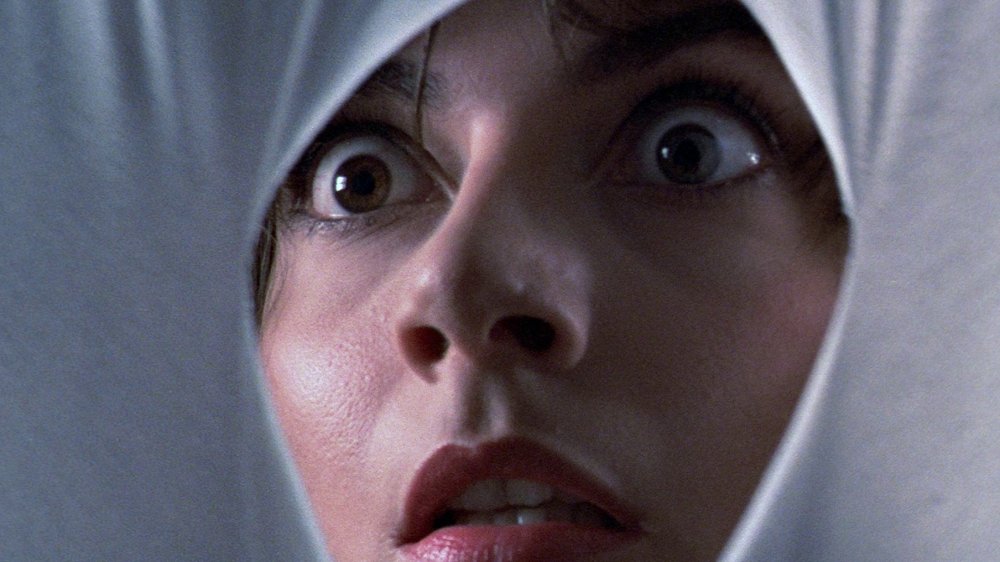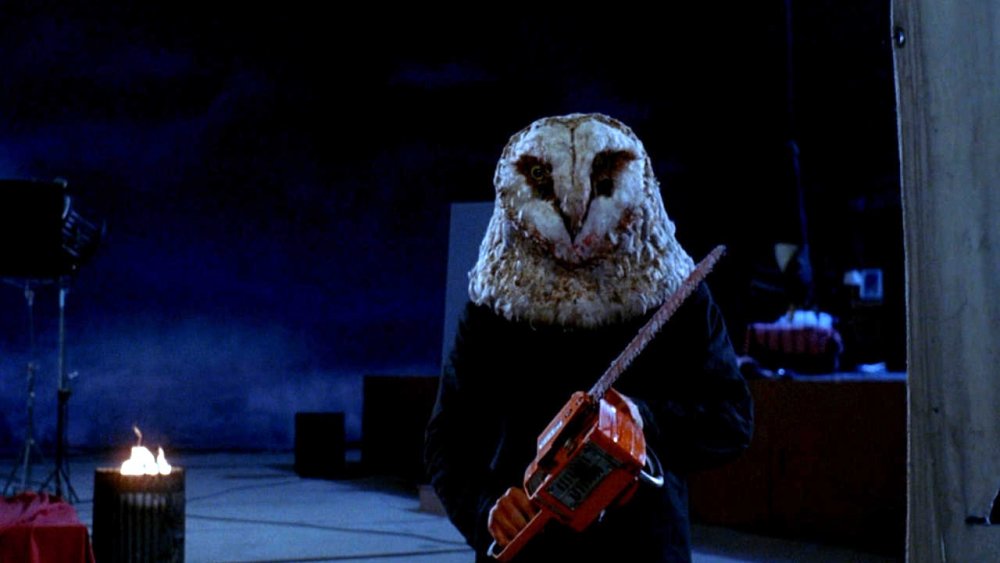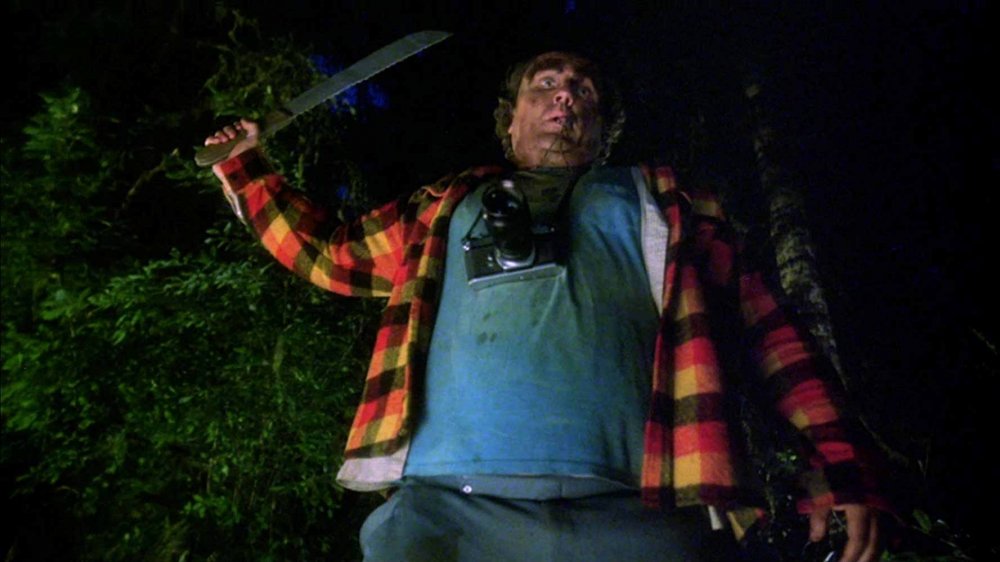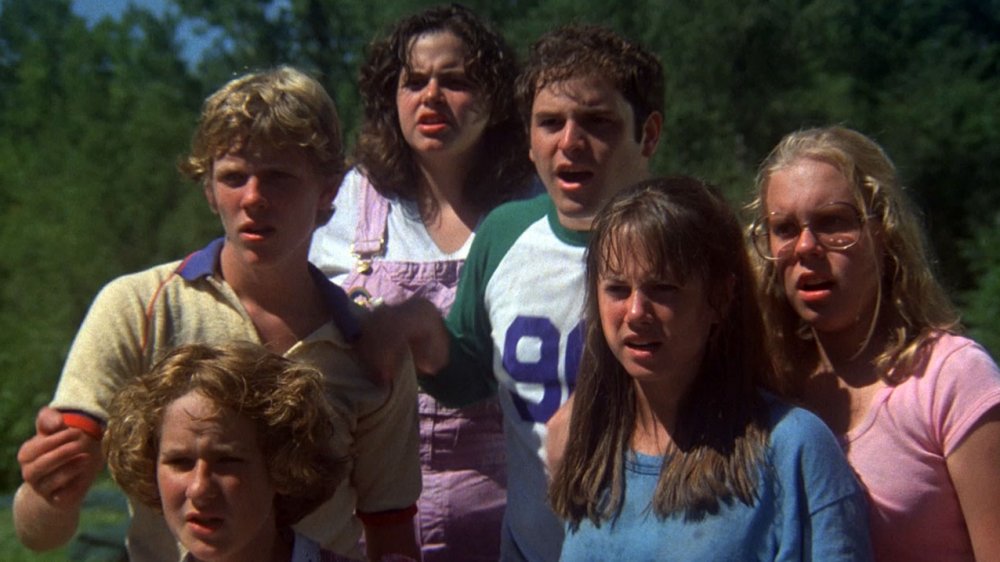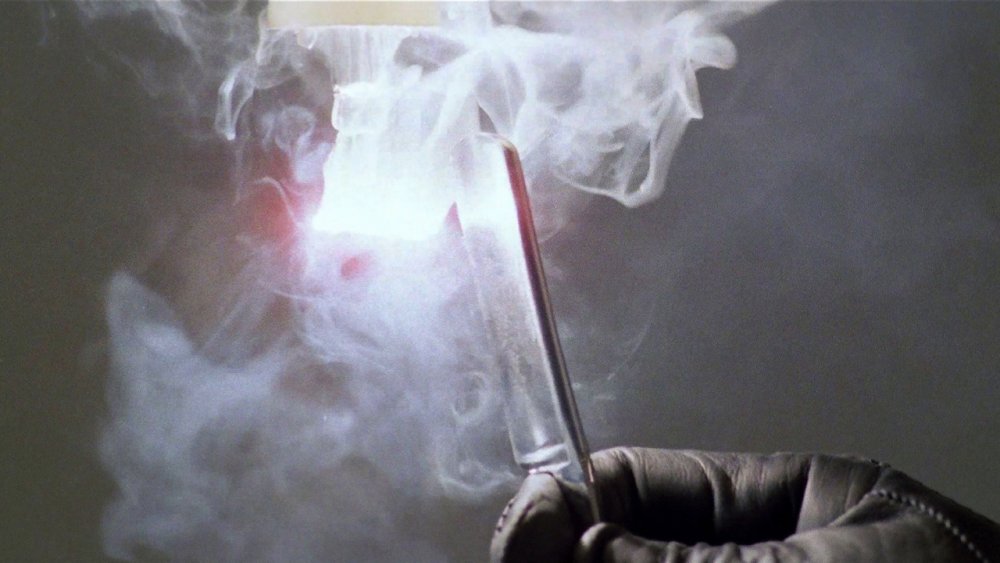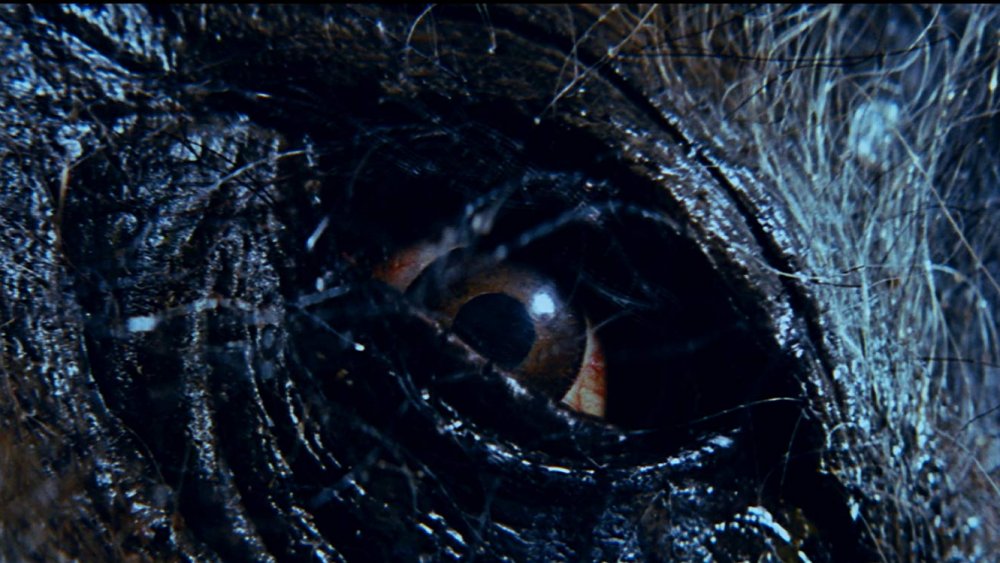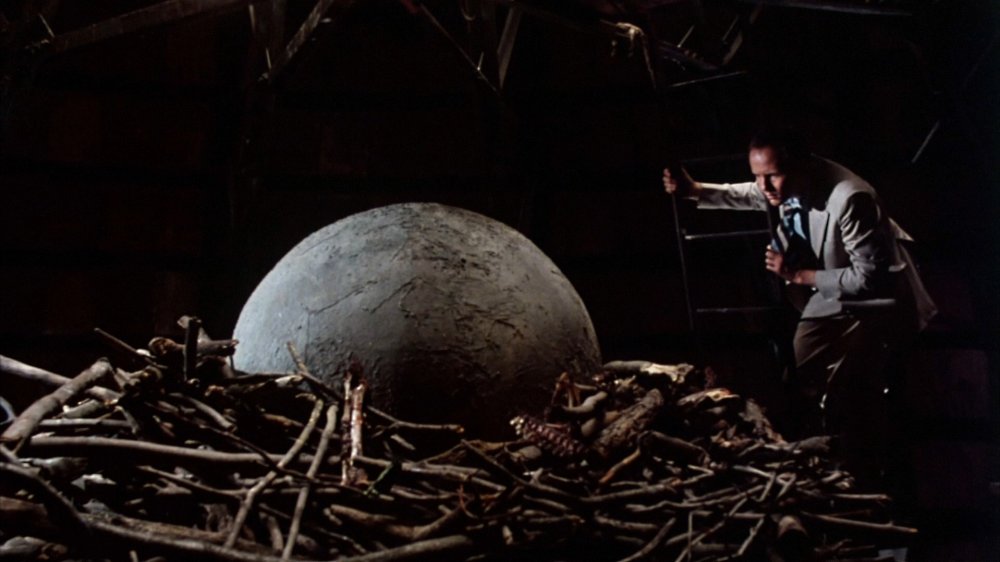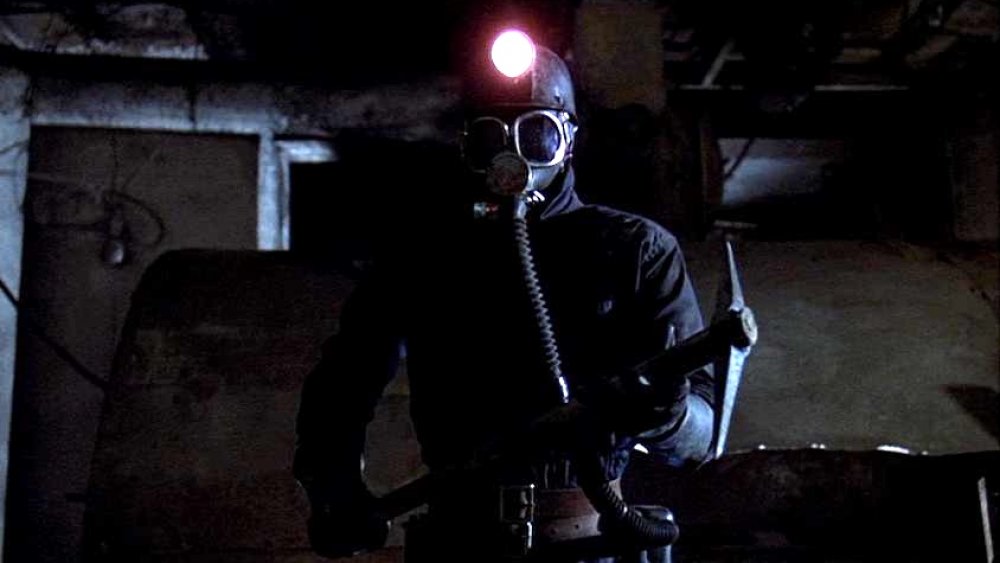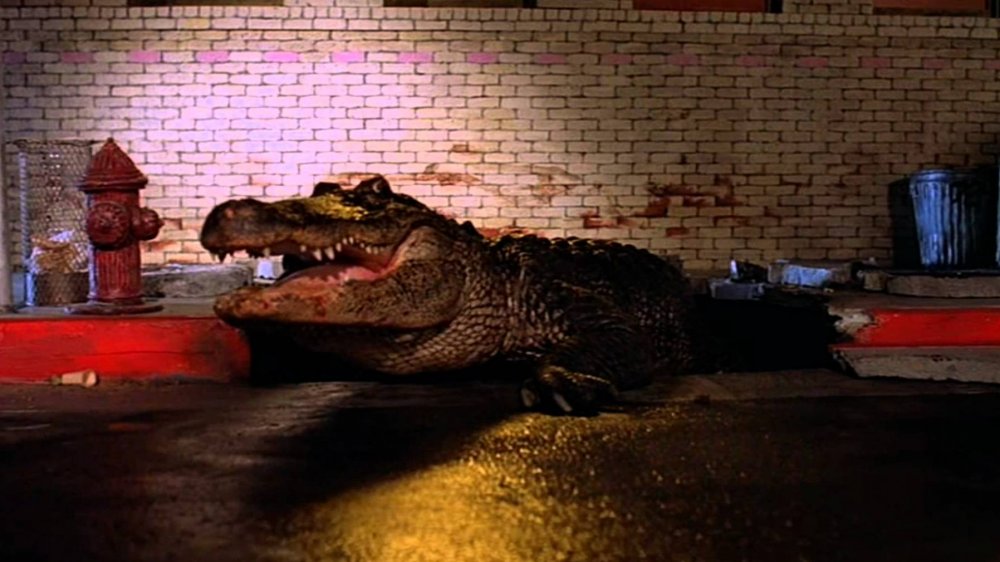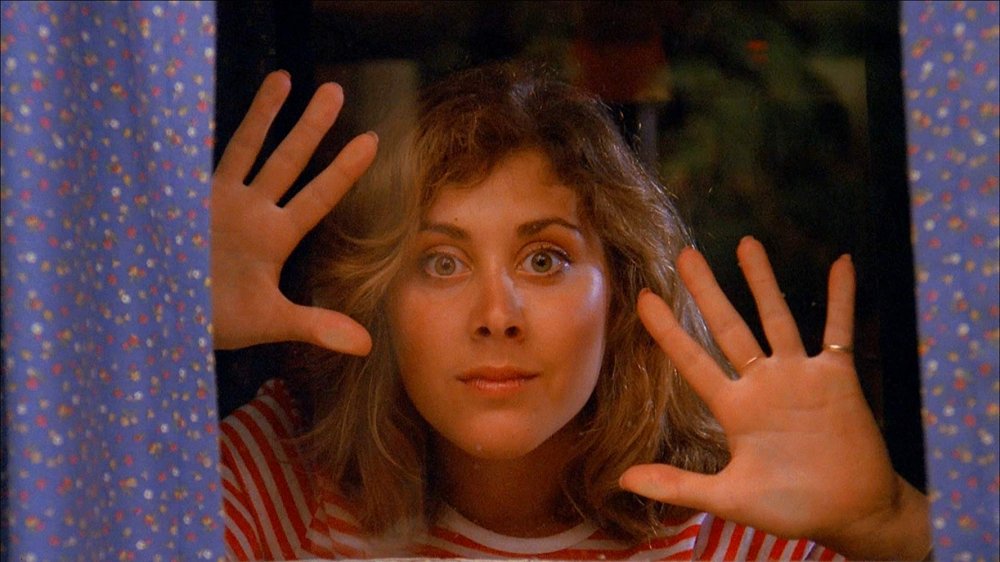Underappreciated Horror Films Of The '80s You Haven't Seen
Between streaming services, cable television, and VOD, the sheer volume of horror movies that fans have to choose from today is incredible — but then again, that's nothing new. For example, the number of horror movies released in the 1980s alone makes it easy for fans to have missed countless hidden gems that might have flown under the radar. Nearly everyone is familiar with the big franchises like Halloween, Friday the 13th, and Nightmare on Elm Street, but for every one of those popular movies, many others have been overlooked. Some have had limited availability, some were foreign releases, and other have just been plain forgotten over the years.
With all that in mind, we're here to celebrate the forgotten '80s horror movies that absolutely deserve to be watched. They are just as worthy as those popular horror franchises and, in many cases, even more so. These movies contain everything from flying monsters to knife-wielding maniacs, so get ready to add some new titles to your watchlists — you're going to want to see these underappreciated horror gems from the '80s.
StageFright: Aquarius (1987)
StageFright: Aquarius is an Italian slasher movie from 1987, directed by Michele Soavi. Haven't seen an Italian slasher film before? For the uninitiated, they aren't that different from American entries in the genre like Friday the 13th or Halloween. In fact, one of the first films credited for giving birth to the slasher genre was a 1971 Italian film called Bay of Blood directed by Mario Bava.
StageFright takes place almost entirely in a theater where a group of actors are rehearsing for an upcoming performance. They're putting on a murder-mystery musical involving prostitutes, dancing (lots of dancing), and a killer called Night Owl. They get locked inside the theatre overnight with a recently escaped killer and, well, the cast and crew do their best to make it through the night.
The movie ticks just about all the boxes as far as what makes a good slasher film: an extremely memorable masked killer, inventive kills, plenty of gore, and a great score. The dancing aspect is something not generally seen in horror. StageFright just oozes 1980s in every frame — the hair, costumes, and music all make it easy to see when this movie was made. Some may claim there's more style than substance and, while that may be true, the style is so amazing it makes up for anything it lacks. Soavi worked for and learned from legendary horror director Dario Argento (Suspiria, Deep Red) and his direction of StageFright is proof that he was a very good student.
Just Before Dawn (1981)
On paper, Just Before Dawn might seem like your typical "group of young people go camping in the wilderness with a killer on the loose" kind of horror movie, but it's really so much more. Written and directed by Jeff Lieberman (Squirm, Blue Sunshine), the movie is about five young people (three guys and two gals) who drive up to the Oregon forest in order to see the land that one of them has inherited. They're warned not to go up there by the forest ranger (played by the amazing George Kennedy), but of course, they don't heed his warning... and soon regret that decision.
Just Before Dawn came out at a time when several other slasher films were vying for box office dollars, but over the years, horror fans have discovered this long-forgotten gem. The pace might feel slower than other films of its kind but that just adds to the feeling of the dread and oppression of the remote mountain location. The beauty of the woods is juxtaposed with the nightmare the campers find themselves in as the film goes on. Lieberman throws in a twist here and there, and the wild ending makes Just Before Dawn one of your not-so-typical "slasher in the woods" movies.
The Burning (1981)
There's an urban legend on the East Coast called the Cropsey — your basic boogeyman/child killer. Parents used to warn their naughty kiddos that Cropsey would get them if they didn't behave, and The Burning uses the Cropsey legend as inspiration for its story. They even go so far as to name the killer Cropsy — a caretaker at a summer camp (yes, another summer camp) who is horribly disfigured in a fire caused by campers who thought it would be funny to scare him. It worked a little too well — he knocked over some candles and set his place, and himself, on fire. Guess who wants to get some revenge?
On paper, The Burning seems likes a Friday the 13th wannabe, and while there are definitely similarities, the movie manages to set itself apart. Along with the interesting kills and jump scares, there are some genuinely scary bits. Another way it sets itself apart is the makeup effects provided by the legendary Tom Savini, which are superior to most films of this genre. Probably the most interesting thing about The Burning, though, is that it marks an early feature credit for future stars Jason Alexander, Holly Hunter, and Fisher Stevens. It came out at a time when there was a glut of slasher movies in theaters, but decades later, The Burning still holds up.
Tenebre (1982)
While many of the movies on this list are considered slashers, the next movie on the list, Tenebre, is considered a giallo — a subgenre of horror mainly made in Italy that includes things like black-gloved killers, elaborate murders, cool music, and strange titles. Giallo films were most popular in the 1970s and the director of Tenebre, Dario Argento, is considered a master of the genre.
Peter Neal (played by Tony Franciosa) is a popular horror writer who makes a trip to Rome to promote his new book, Tenebre. As soon as he arrives, people start being murdered in ways that mirror the book. Neal grows frantic to find the killer after he's questioned by police and people he's close to start dying. The film has some really well-staged murders, something Argento is known for (see his Suspiria for more classic kills). Franciosa and his two co-stars, John Saxon and Daria Nicolodi (Argento's wife at the time) give terrific performances. The music score by Goblin, who frequently worked with Argento, is also top-notch. Tenebre 's violence is arguably excessive — not only are there kills aplenty but the kills are spectacularly bloody — but over the years, the movie has gained popularity among horror fans and is considered not only one of Argento's best giallos but one of the best of the genre overall.
Razorback (1984)
Australia is a scary country. One only has to look at their native animals to see just how scary it can be. Also, judging by a lot of Australian horror movies, the Outback is a place one goes when they want to die. Case in point: Razorback, helmed by renowned '80s music video director Russell Mulcahy.
Razorback is a killer animal movie — and what a killer it is: a giant man-eating boar. The animal terrorizes a local town, and after losing his wife to said boar, a man comes to town vowing to destroy the animal once and for all. As this movie was made in 1984, CGI wasn't an option, so like the shark in Jaws, the boar in the movie is animatronic. Also as in Jaws, this means you don't get to see a whole lot of boar, but no matter. One of the best things about the movie is the amazing cinematography from Dean Semler (Mad Max 2, Dead Calm), which makes the whole thing look better than most of its contemporaries. The setting also helps to give the movie an extra sinister feeling. Unfortunately, Razorback had a limited release in the United States, so it wasn't until it reached other shores on home video that the film started to receive more appreciation.
Q: The Winged Serpent (1982)
Larry Cohen was a prolific director who made several horror movies, and most of them should be watched, but we're focusing on one — Q: The Winged Serpent. A couple of things make Q something special: One, it's about a giant flying lizard (a Quetzalcoatl) flying around New York City. Two, the performance given by the star of the movie, Michael Moriarty, is nothing short of extraordinary.
Jimmy Quinn (Moriarty) is a thief who is forced to take part in a heist, then goes into hiding when the heist goes bad. Someone or something is killing people in the city, and two NYPD cops (Richard Roundtree and David Carradine) try to figure it out. Quinn stumbles onto the reason people are being killed and then blackmails the cops to give him money for the information. As if that isn't enough, someone is going around town performing ritualistic murders. Monster movies are a dime a dozen, but Q manages to stand out mainly because of Moriarty — it's like he's acting in a whole other movie. The stop-motion animation might seen dated to modern audiences used to CGI, but it doesn't lessen the enjoyment of the film.
My Bloody Valentine (1981)
Canada isn't exactly known for its slashers, but 1981's My Bloody Valentine is a delightful exception. As the story begins, young people in a mining town are organizing a Valentine's Day dance — which might not sound like a big deal, but the town hasn't had one in 20 years. Turns out that's the day a miner was trapped underground after an explosion. He wasn't the only one trapped down there, but he was the only survivor — and, well, he got hungry and ate some friends. Sent to a mental hospital, the miner escaped to seek vengeance on those he deemed responsible, and you guessed it, they happened to be at the Valentine's dance. The folks trying to organize the new dance think it's time to forget about the past. Man, they just want to dance, okay? The older people in town are dead set against it. Of course, the dance goes on as planned... and, well, you can guess what happens next.
My Bloody Valentine proves that using Valentine's Day as a backdrop for a horror movie is a perfect pairing. The kills in the movies are interesting, not just in terms of method but also the setting. The movie didn't do well at the box office upon release but it's found a second life in the decades since it became available on home media.
Alligator (1981)
Remember that urban legend about alligators in the sewer? The one where a baby alligator is flushed down the toilet and then it begins to grow down there, ready to terrorize the city? Well, that's also the premise of Alligator, written by John Sayles. You might think of Sayles as an indie director of critically acclaimed dramas, but you should also know that he's written several horror movies in addition to Alligator, including Piranha and The Howling.
In Alligator, a baby alligator gets flushed down the toilet and survives in the sewers by chomping on a seemingly endless supply of rats (which happen to be full of growth hormones). No one keeps baby alligator in the sewer, so once it becomes giganto alligator, it escapes and is ready to start eating people. Alligator isn't afraid to make fun of itself while at the same time having some genuinely scary moments. Robert Forster as the cop and Henry Silva as the big game hunter give terrific performances and are a highlight in this most enjoyable monster movie. Although it's better than most "animals gone wild" movies made after the massive success of Jaws, Alligator tends to get lost in the shuffle. Seek it out.
The Slumber Party Massacre (1982)
There are a number of special things about The Slumber Party Massacre, starting with the fact that the movie was written by Rita Mae Brown and directed by Amy Holden Jones. Having a female writer and director on a horror film these days still isn't the norm — and in 1982, it was rarer still. The movie was originally written as a satire of the slasher genre, and although producer Roger Corman wanted a straight slasher, the movie remains the satire it started out to be, taking on all the masculinity we generally see in slasher movies.
As the story begins, Trish's parents are going out of town — so, like most teenage girls in the 1980s seem to do in the movies, she decides to throw a slumber party. The girls engage in typical activities like eat pizza, drink, listen to music, and dance. A couple of boys crash the party and are invited in... and an escaped killer also decides to pay the party a visit. You can guess the rest. The Slumber Party Massacre delivers on all fronts; there are some actual tense moments, the kills are pretty great, and the gore is good. Plus, there's the added bonus of poking fun at all the things men usually do in a slasher movie.
